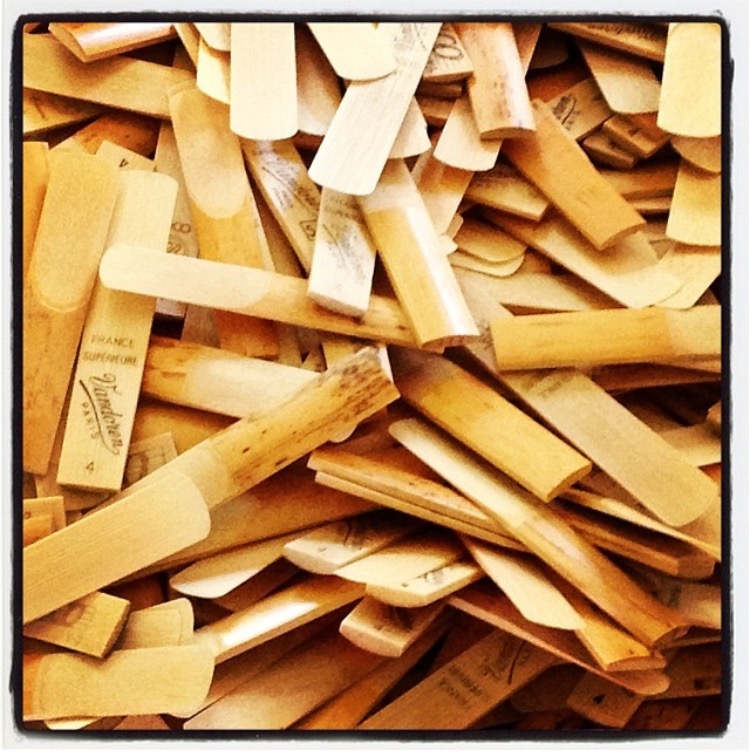Debunking Popular Clarinet Reed Myths
I’ve been on a reed kick lately. As I was writing my last article, The Complete Guide to Clarinet Reeds, I realized that there are several reed myths which are still being perpetuated.
My mission? To debunk these popular clarinet reed myths!
Myth: The harder the reed, the better the player.
Truth: Don’t let anyone reed-shame you! Reed strength is chosen according to your mouthpiece. A closer tip opening = harder reeds, whereas a more open tip = softer reeds. Most clarinetists begin playing on a strength 2 or 2.5 reed and move up to 3 when they get above the staff. Once they are comfortable playing in all registers, I recommend they find reed strengths suitable for their mouthpiece. Keep in mind that mouthpiece facing length will also affect reed strength: longer facing = harder strength; shorter facing = softer strength. (Check out my advice on selecting a mouthpiece and selecting a reed that works for you.)
Myth: Dark spots on the reed’s lower half mean it’s a bad reed.
Truth: Reed spots are just where the leaves were covering the cane during the sunning process. These “reed freckles” are natural and don’t affect the reed’s quality. If anything, these unique spots make reeds easier to tell apart! (Please note that the dark spots I’m referring to are on the reed’s uncut lower part – if you have dark spots which you suspect to be mold, discard the reed immediately.)
Myth: Synthetic reeds are only for marching band.
Truth: More and more professional clarinetists are making the switch from cane to synthetic in solo, chamber, orchestral, and other professional settings. Technological advances in clarinet industry have resulted in high-quality synthetic reeds which are impervious to environmental changes like cane reeds are. For more information on cane vs. synthetic reeds, check out my article.
Myth: Reeds with odd/even serial numbers play better/worse.
Truth: While some of you might be rolling your eyes, I’ve heard this myth enough to include it on the list! Serial numbers are used on some reeds as a method to verify authenticity, and the numbers have no bearing on how the reed plays.
Myth: You don’t need to break in reeds.
Truth: While this is technically true, it’s strongly encouraged to develop a break-in process for your reeds. This will ensure that they play consistently and last much longer compared to not breaking them in. Once you have broken in your reeds, it’s also important to rotate your reeds.
Myth: You don’t have to sanitize your reeds.
Truth: While some reeds might not last long enough for you to worry about sanitizing or disinfecting them, it’s important to sanitize any reeds you’d like to keep in your rotation. This is especially true after being sick or exposed to illness. You can soak reeds in isopropyl alcohol or hydrogen peroxide for 20-30 seconds. Make sure you thoroughly rinse the reeds and allow them to completely dry before playing to avoid ingesting the isopropyl alcohol or hydrogen peroxide. (Learn more about ways you can disinfect your clarinet after you’ve been sick.)
Myth: The left/right side is always harder.
Truth: Just like snowflakes, no two reeds are alike. This means that each reed will have slightly different measurements and responses. It’s important to develop a reed break-in and adjustment routine that provides you the highest-quality results for your musical goals.
Myth: You should just wet the tip of the reed.
Truth: You should wet the entire reed, not just the tip. The xylems are the tiny tubes that carry water the length of the reed via capillary action, so wetting the entire reed will make it more responsive.
I hope these help you debunk some popular clarinet reed myths! What other reed myths have you heard? Leave a comment below!
